Only when you know every detail of the terrain condition can you maneuver and fight. Sun Tzu (The Art of War)
If, in addition to knowing the terrain in which the battle is going to take place, you have the technological capacity and the necessary engineers to devise war vehicles to adapt to the orography and circumstances, there is a good chance that you will return home in one piece. Here are some examples:
,
Nellie (White Rabbit No. 6 or Cultivator No. 6) . 1939. This huge "cultivator" - 130 tons and a length of 23 meters - was designed to advance on an enemy position through the trench it was digging. Upon reaching the front line, the troops advancing behind it would assault the enemy troops.
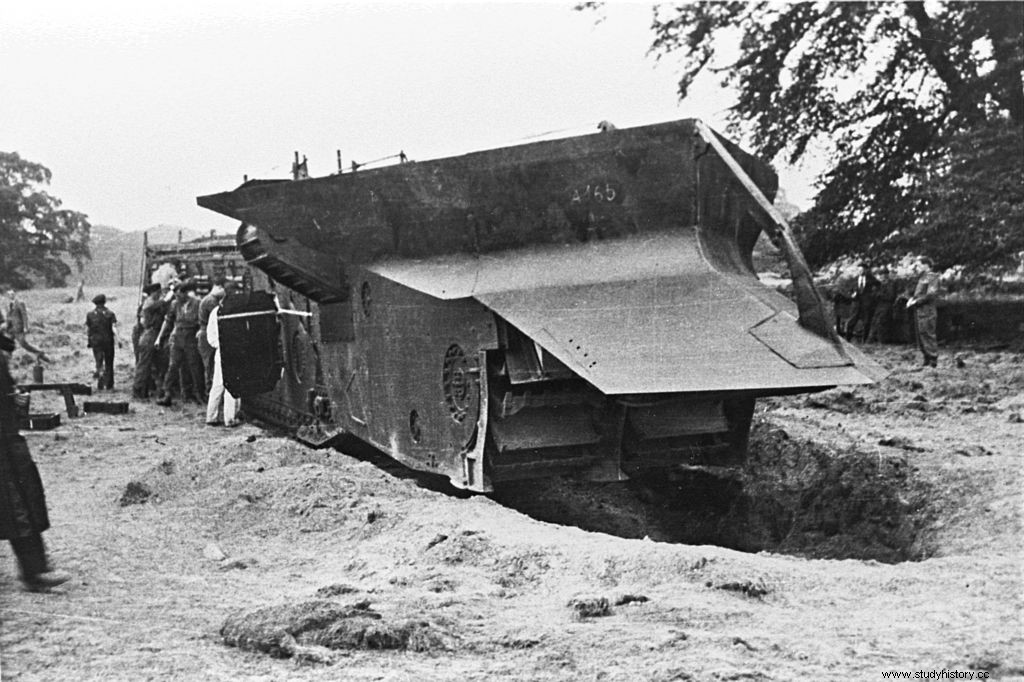
Donald Duck Tanks (DD Tank, Duplex Drive) . 1944. Amphibious variant of the Sherman tank used in the Normandy landings. The fabric screen allowed it to float, and the pair of propellers located at the back moved forward in the water.
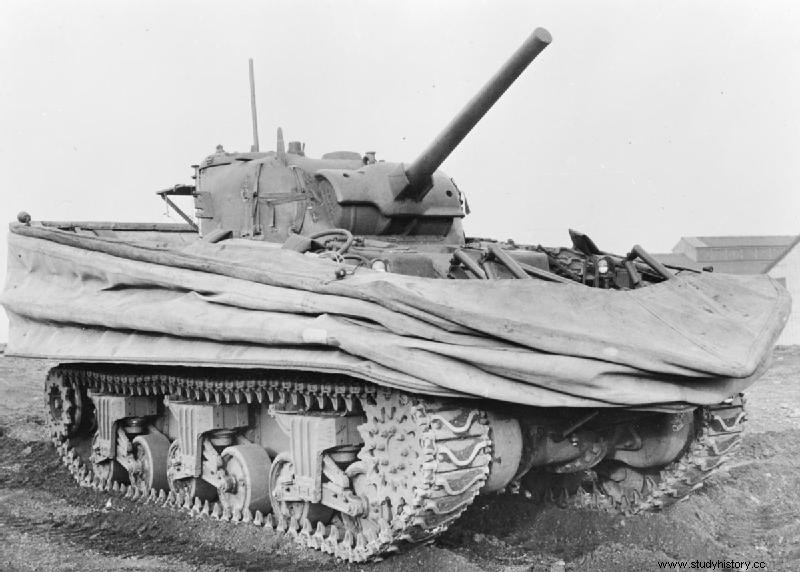
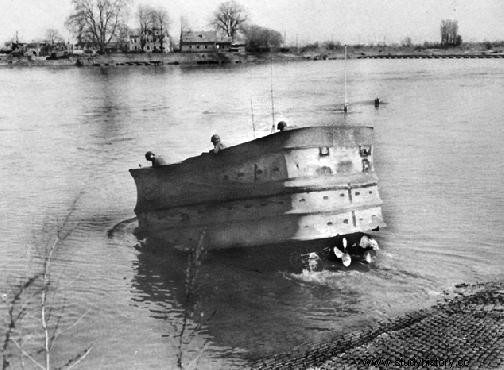
Centaur Bulldozer . 1944. A Cromwell tank without a turret and equipped with a blade. These armored war bulldozers were created for obstacle removal.
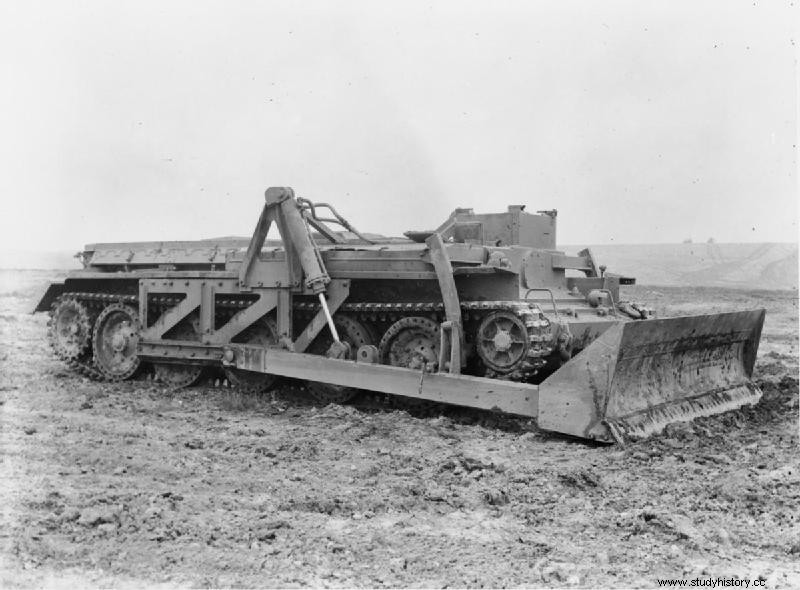
Channel Defense Light (CDL) . Tank with a modified turret in which a powerful spotlight is placed for night attacks. In addition to illuminating enemy positions to make the attack more effective, it was also used to blind the enemy and make defense difficult.
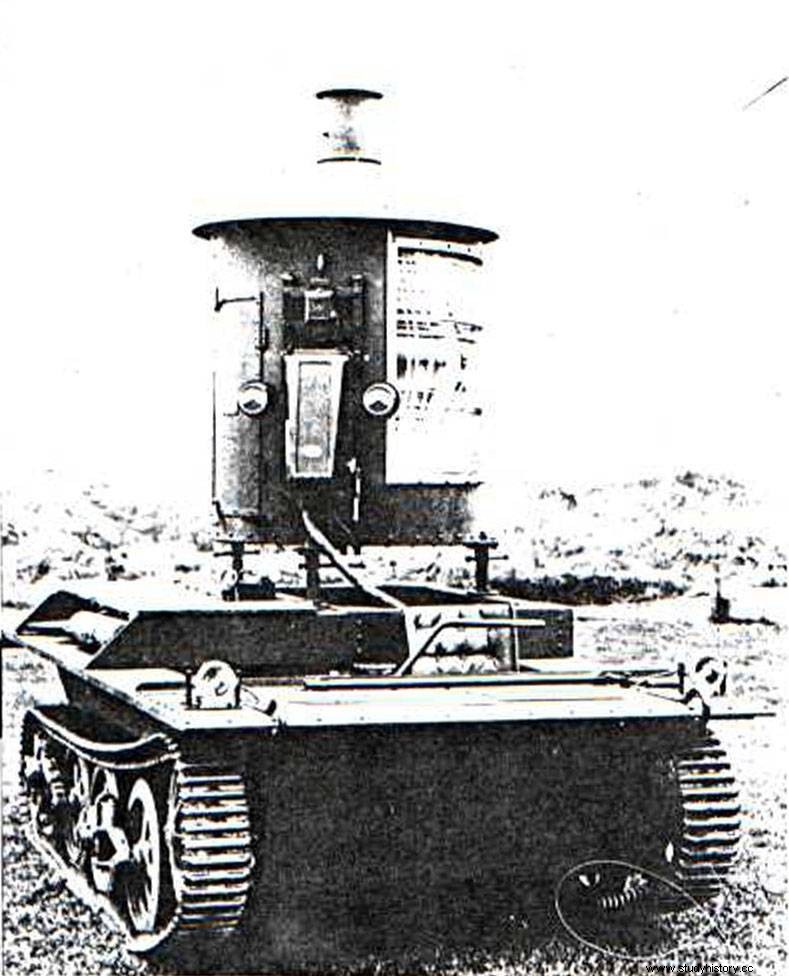
1915 project
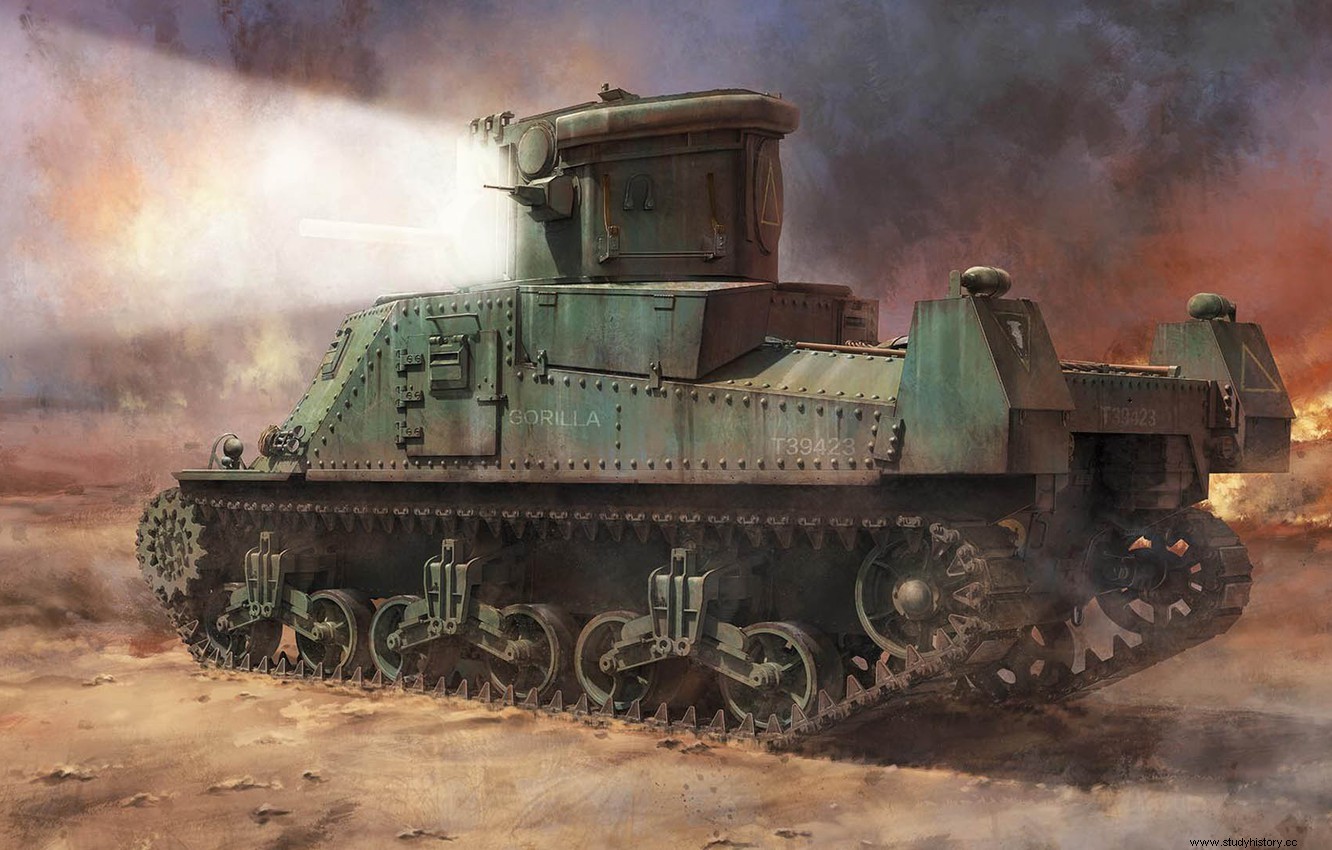
CDL – World War II
Mine flail (Crab) . 1942. Tank equipped with a huge scourge of chains that rotates and detonates land mines.
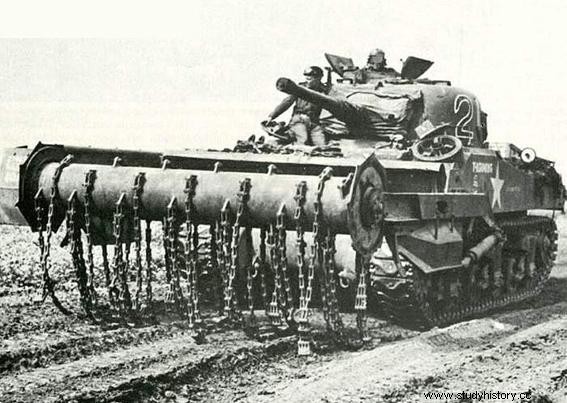
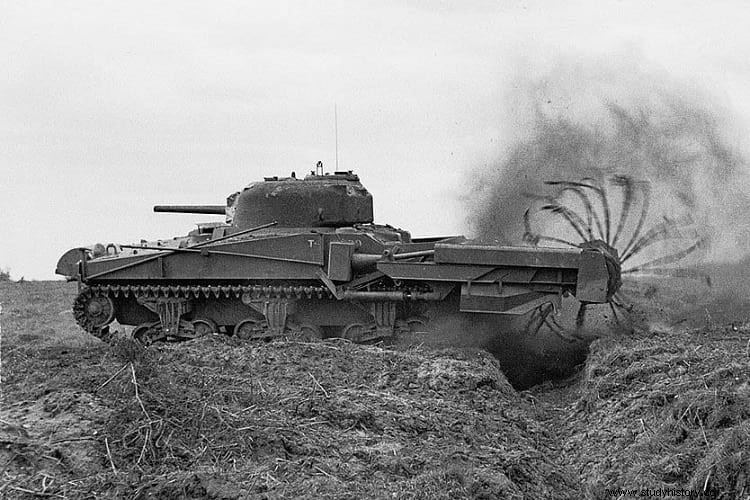
Beach Armored Recovery Vehicle (BARV ). 1944. Tanks waterproofed and whose turret was replaced by a higher armored structure that allowed them to operate in waters up to 3 meters deep. Their job was to remove vehicles stuck on the beaches or return small stranded boats to the water. Sometimes the crew had a diver in charge of hooking up the towing chains.
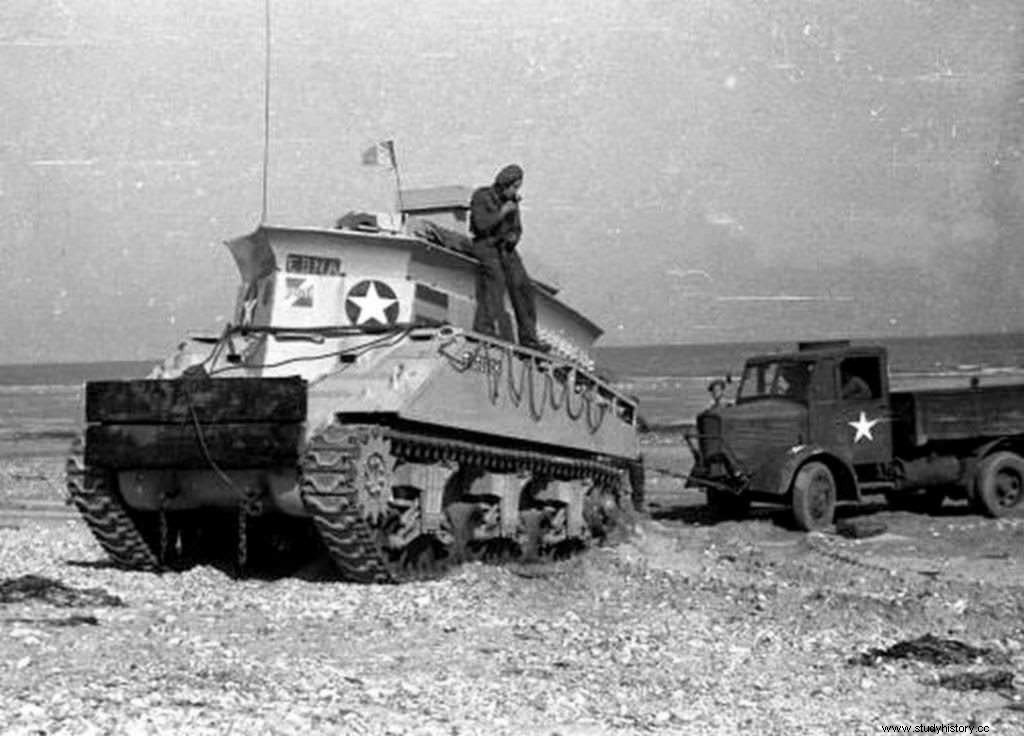
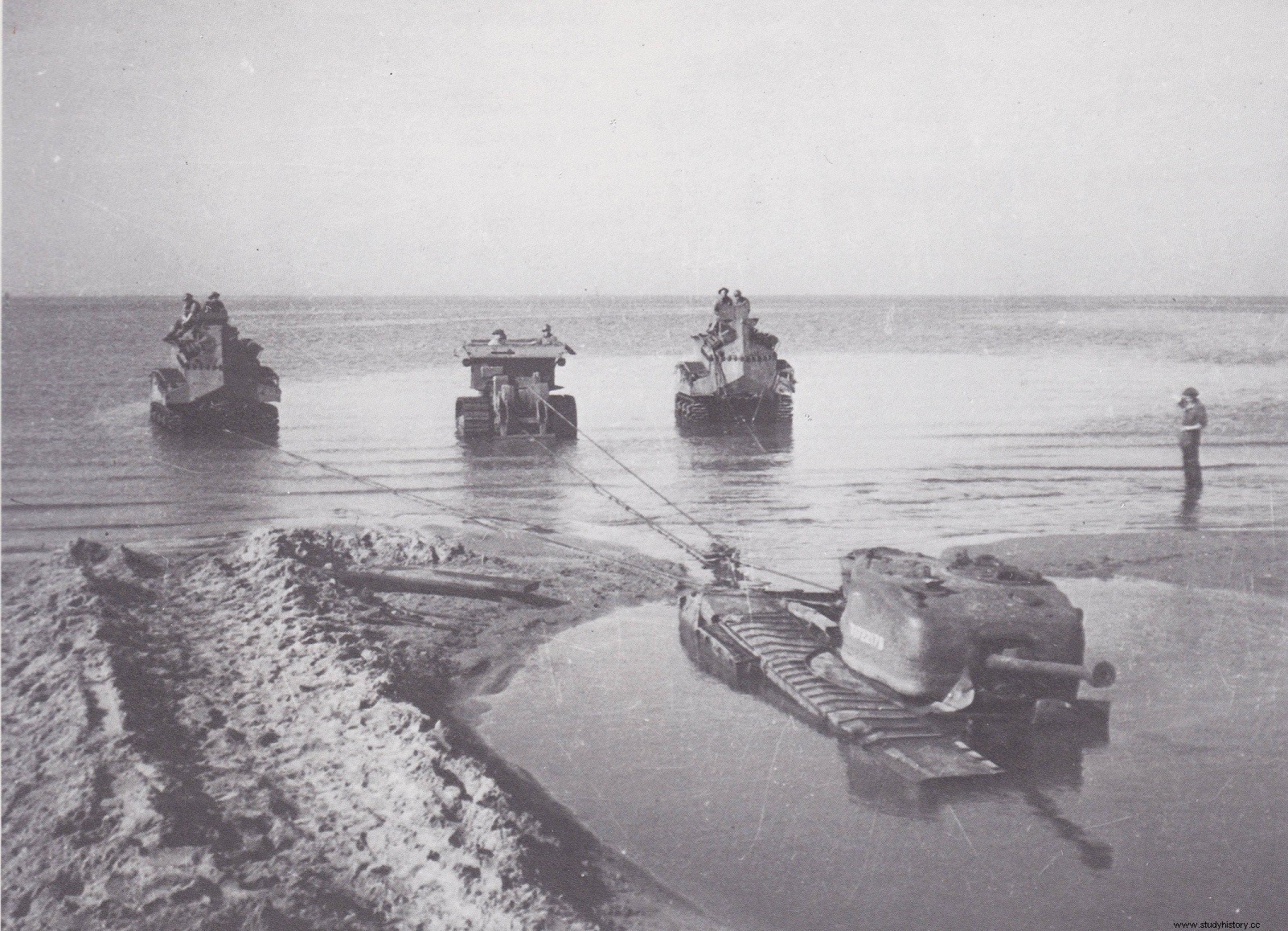
Armored Vehicle Royal Engineers (AVRE) . Series of military engineering armored vehicles operated by engineers to facilitate the transport and advancement of troops.
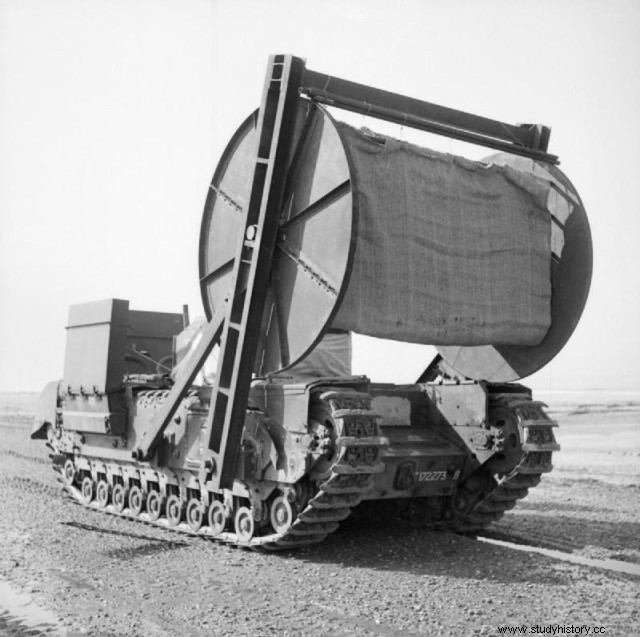
Equipped with a canvas reel reinforced with steel bars that unrolls to make a path that facilitates the passage of vehicles on soft ground
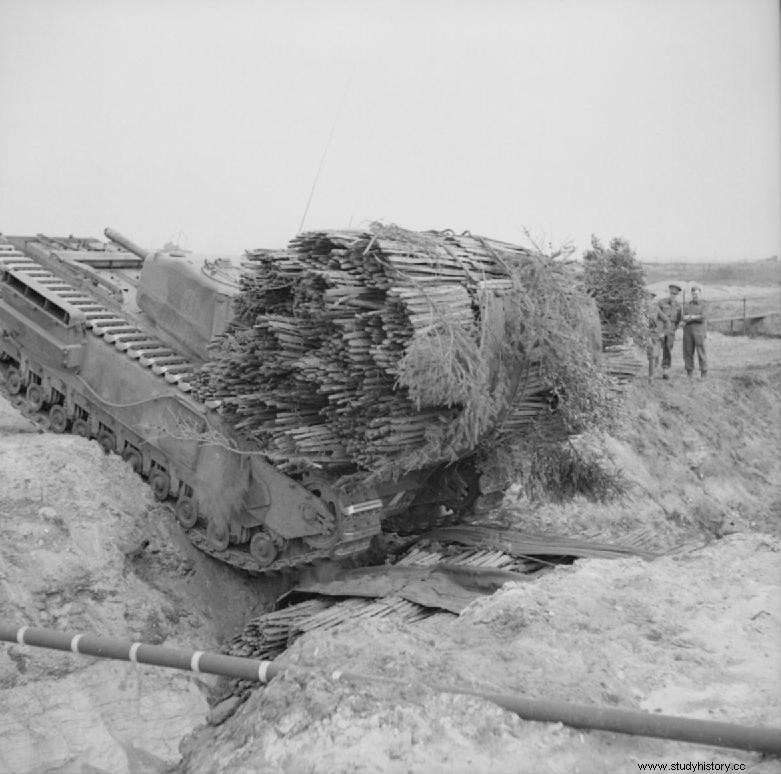
Equipped with bundles of trunks and branches, they are used to fill ditches or wadis. They also have pipes inside them to allow the passage of water.
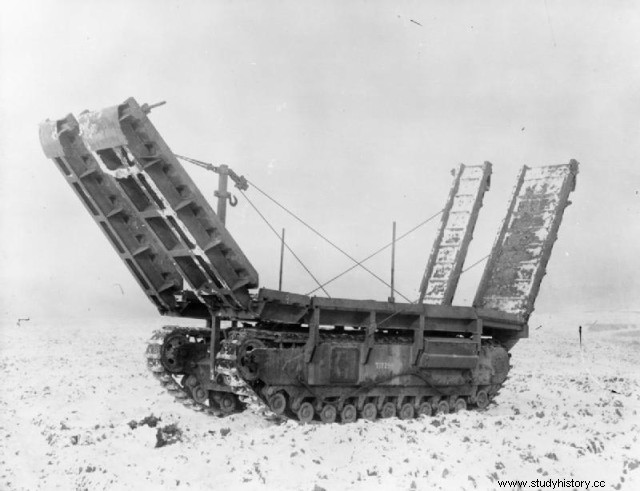
Turretless tank that had extendable ramps at each end for other vehicles to climb up and over terrain obstacles.
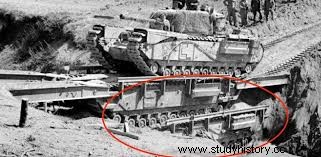
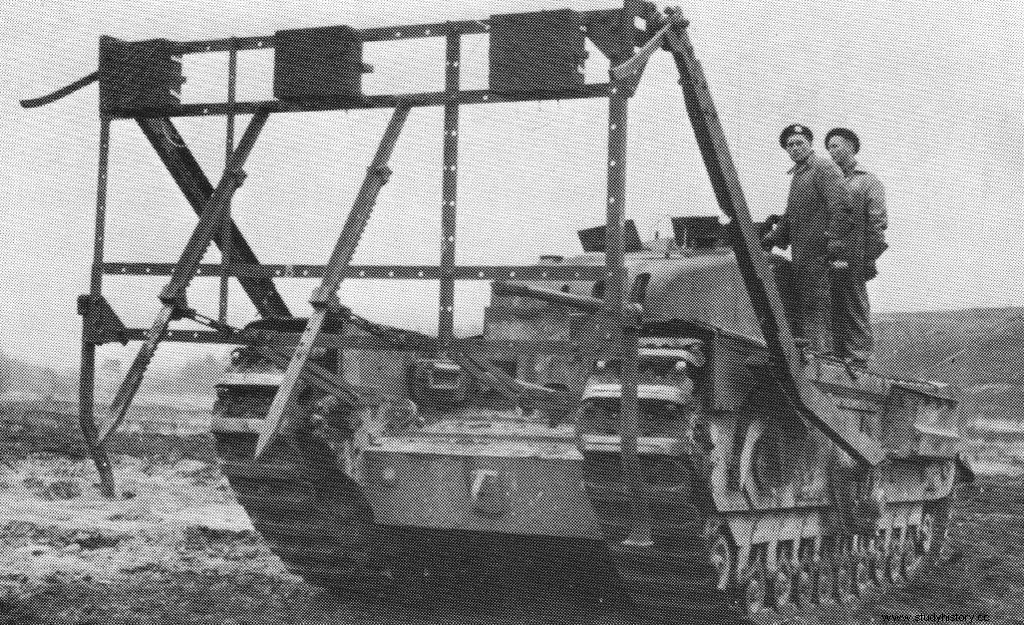
To place demolition charges on concrete walls and detonate at a safe distance.
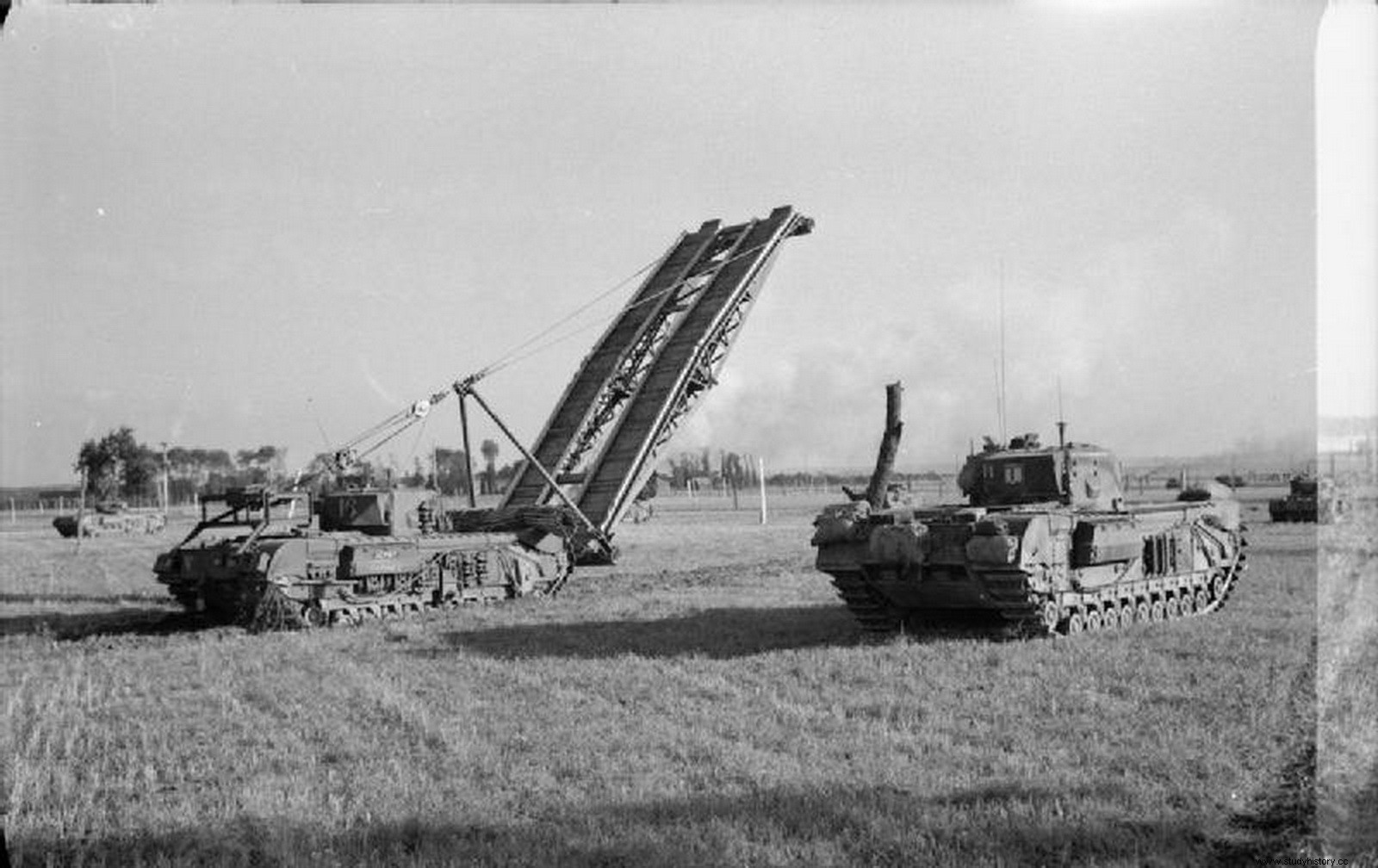
In less than a minute you had assembled a bridge to cross a river up to 9 meters wide.
Tsar Tank . 1914. An armored tank, tricycle version, of disproportionate dimensions:the front wheels were 9 meters in diameter, almost 18 meters long, 12 meters wide and weighed 60 tons, had a crew of ten men and was armed with 10 cannons. So huge, as useless.
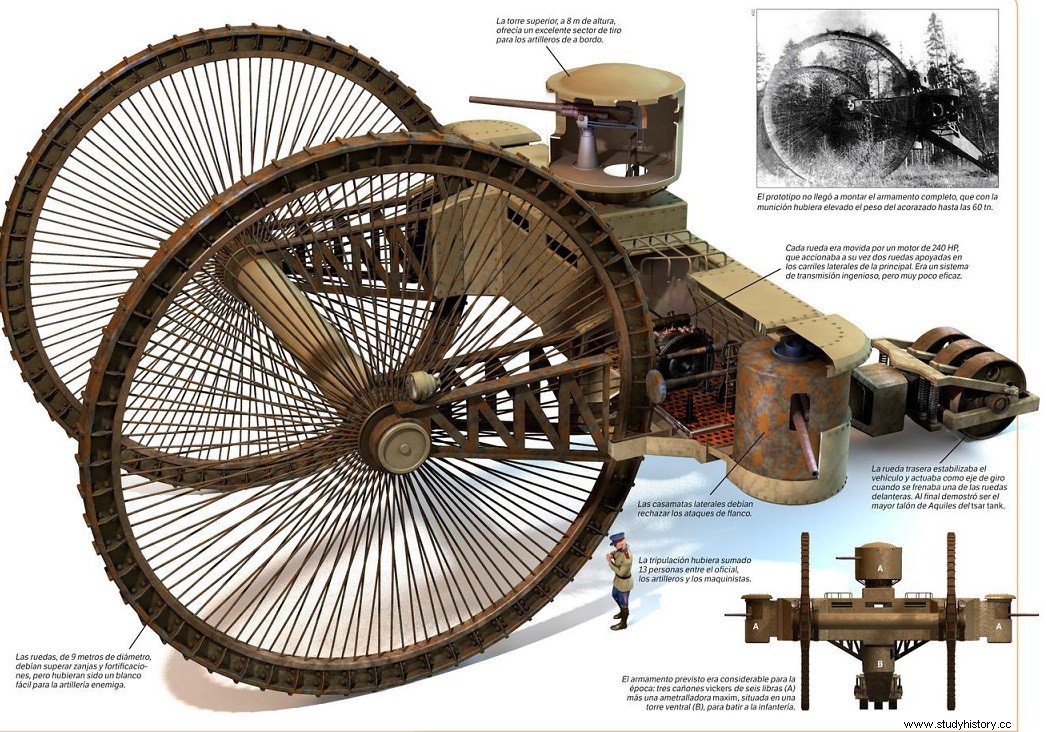
Ladungsträger Goliath (Beetle Tank) . 1942. The opposite version of the Tsar's tank, a small tracked vehicle guided by cable or by remote control and which allowed its load of explosives of more than 60 kg to be exploded from a distance.
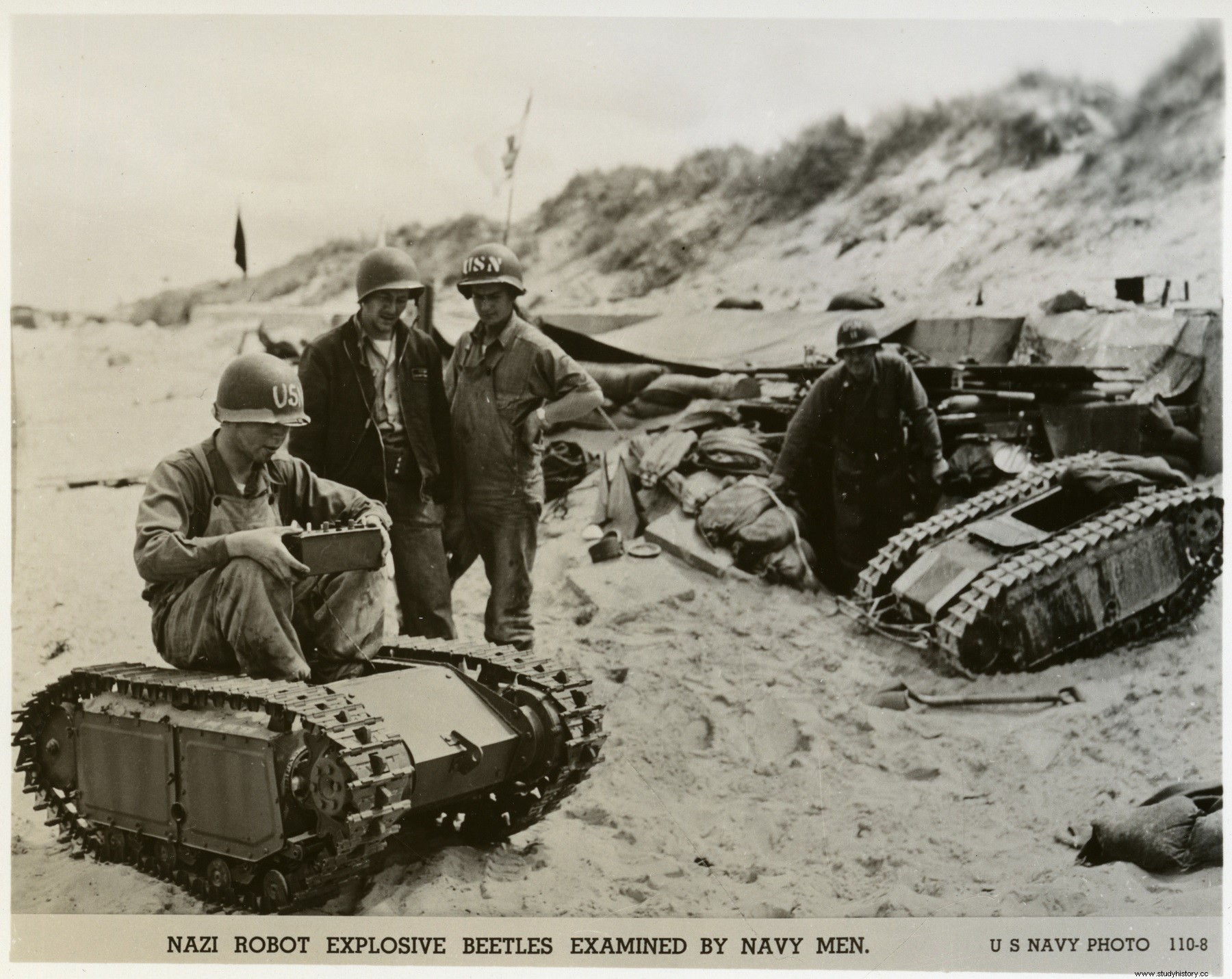
Antonov A40 (Flying Tank) . 1942. It was a lightened T-60 armored car that served as a fuselage and was attached to wooden wings to be towed by another plane. At the time of landing, the mother device descended and the tank started its engine, a little before touching the ground it detached itself from the wings, fell on the tracks and rolled out. Too pretty to be… viable.
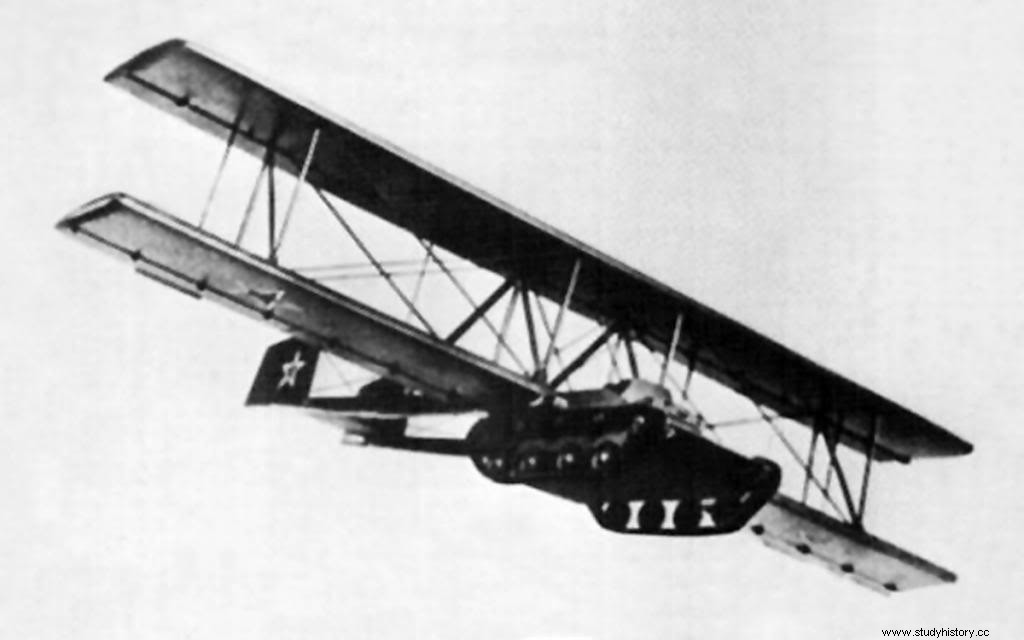
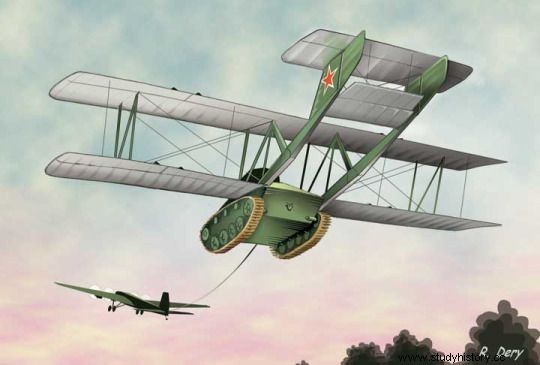
Hamilcar Mark I . Here the tank goes inside the wooden glider, which is the one that lands when dropped by the mother plane.


Vespa 150 TAP (Troupes Aéro Portées). 1956. It was a modified Vespa scooter with a reinforced frame and a recoilless cannon used by French paratroopers in Algerian lands during the repression ordered by General De Gaulle to quell secessionist revolts and discarded, as impractical, shortly after. It could be fired from the motorcycle but its effectiveness was nil, so it had a tripod to mount on the ground.
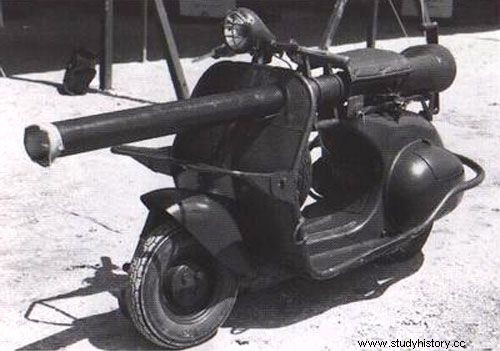
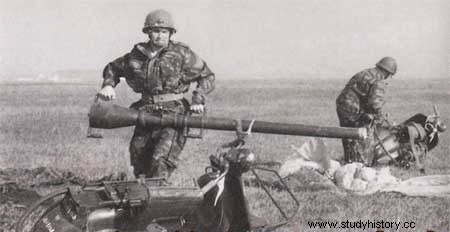
Logically, there are many more and even more strange. Here I have only left a small sample of some that, at least, have been manufactured.
